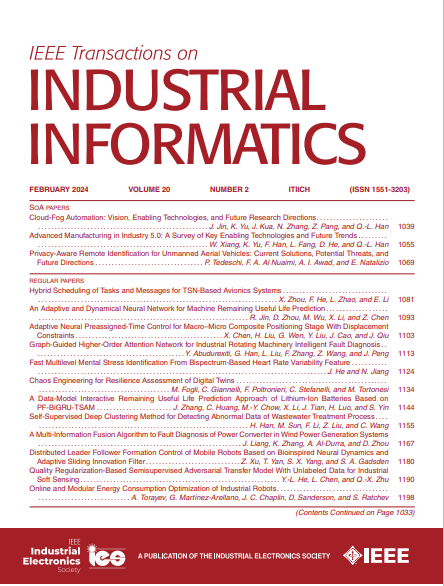用于管理基于OPC ua的微电网的边缘控制器和云度量引擎的编排
IF 9.9
1区 计算机科学
Q1 AUTOMATION & CONTROL SYSTEMS
引用次数: 0
摘要
微电网是分布在大面积的独立电源,利用多个物联网传感器收集数据。传感器操作的固有性质产生了相当大的数据传输冗余,增加了整个管道的总体计算开销。本研究提出了一种新的云边缘协作框架,用于管理基于OPC统一架构(UA)的微电网和OPC- cloud。其重点是云度量引擎(CME)和边缘控制器(EC)的编排。CME通过分析收集到的数据,战术上确定传输配置。特别是,它能自适应地响应数据的变化。EC通过配置基于频率和阈值的传输,实现有效的传输控制,减少网络开销和资源消耗。通过与最先进的深度学习预测方法的比较,我们证实了OPC-CLOUD的有效性,它显着降低了边缘的计算开销,同时保持了稳定的网络传输。我们还证明了OPC-CLOUD可以保持时间序列预测模型的性能,同时减少网络流量。本文章由计算机程序翻译,如有差异,请以英文原文为准。
Orchestration of Edge Controller and Cloud Metric Engine for Managing OPC UA-Based Microgrids
Microgrids are independent power sources distributed across large areas and utilize multiple IoT sensors to collect data. The inherent nature of sensor operations generates considerable data transmission redundancy, increasing overall computational overhead across the entire pipeline. This study proposes a novel cloud-edge collaborative framework for managing OPC unified architecture (UA)-based microgrids and OPC-CLOUD. Its salient point is the orchestration of the cloud metric engine (CME) and edge controller (EC). CME tactically determines the transmission configuration by analyzing the collected data. In particular, it adaptively responds to the variations in the data. EC enables effective transmission control of reducing network overhead and resource consumption through frequency-based and threshold-based transmission configured by CME. Through the comparison with the state-of-the-art deep learning prediction approach, we confirm the effectiveness of OPC-CLOUD that significantly reduces computational overhead at the edges, while maintaining stable network transmission. We also demonstrate that OPC-CLOUD can maintain the performance of the time-series prediction model, while reducing network traffic.
求助全文
通过发布文献求助,成功后即可免费获取论文全文。
去求助
来源期刊

IEEE Transactions on Industrial Informatics
工程技术-工程:工业
CiteScore
24.10
自引率
8.90%
发文量
1202
审稿时长
5.1 months
期刊介绍:
The IEEE Transactions on Industrial Informatics is a multidisciplinary journal dedicated to publishing technical papers that connect theory with practical applications of informatics in industrial settings. It focuses on the utilization of information in intelligent, distributed, and agile industrial automation and control systems. The scope includes topics such as knowledge-based and AI-enhanced automation, intelligent computer control systems, flexible and collaborative manufacturing, industrial informatics in software-defined vehicles and robotics, computer vision, industrial cyber-physical and industrial IoT systems, real-time and networked embedded systems, security in industrial processes, industrial communications, systems interoperability, and human-machine interaction.
 求助内容:
求助内容: 应助结果提醒方式:
应助结果提醒方式:


